4.1 Years 1800-1899
Number of slide rules: 19.
Besides being a tool for the occasional scientist or mathematician of the day, slide rules were used during this period for navigational computations, the calculations of timber measurements and building trades, and the computation of taxes – especially for the taxation of alcohol. So-called “gauging rules” or “excise rules” were used to measure and calculate the volume of liquid within a barrel and determine the tax on the product. The late 1700s and early 1800s also saw slide rules used for calculations in the development of steam engines, called engineer’s rules, or “Soho” rules, as developed by J. Watt and M. Boulton. Their scales were a variant of the scales found on carpenter’s rules introduced years earlier by H. Coggeshall in 1677. By the mid-1800s military calculations for artillery applications motivated the development of a standard set of scales by Lt. A. Mannheim of France. The four scales on his slide rule were labeled as A, B, C, and D and while such labeling of scales were common on other early rules, his became standard labels for those particular scales as found on almost every slide rule since.
While various carpenter’s and engineer’s rules, as well as Gunter’s scales, were made by instrument makers in the U.S. in the early 1800s, the earliest documented slide rule to be designed, manufactured, and sold in the U.S. was the Palmer’s Computing Scale in 1843. And by the 1850s several makers of measurement rules, such as Stanley, were also offering carpenter’s, engineer’s, and Gunter’s rules. Standard (e.g. Mannheim-style) slide rules were being imported by the 1880s from Europe into the U.S., particularly from France and Germany. In 1890, such slide rules were only being manufactured in Great Britain, Germany, and France. It was about 1890 when Keuffel and Esser in the U.S. began making their first slide rule, Thacher’s Calculating Instrument. A significant device, the Thacher is a segmented linear slide rule with its segments distributed around a rotating cylinder. But in 1891 the Duplex (double-sided) slide rule was invented by William Cox of England, and he assigned his patent to Keuffel and Esser. That year K&E decided to develop their own process for manufacturing standard slide rules, the first of which became available on the American market later in the decade.
Of technical note, the latter part of this century saw the development of the theory of electromagnetism, the telephone, the light bulb, the combustion engine, and aerial flight such as ballooning and airships.
| Year | Maker | Model | |
|---|---|---|---|
| 1809 | Jacob and Halse | Sector |
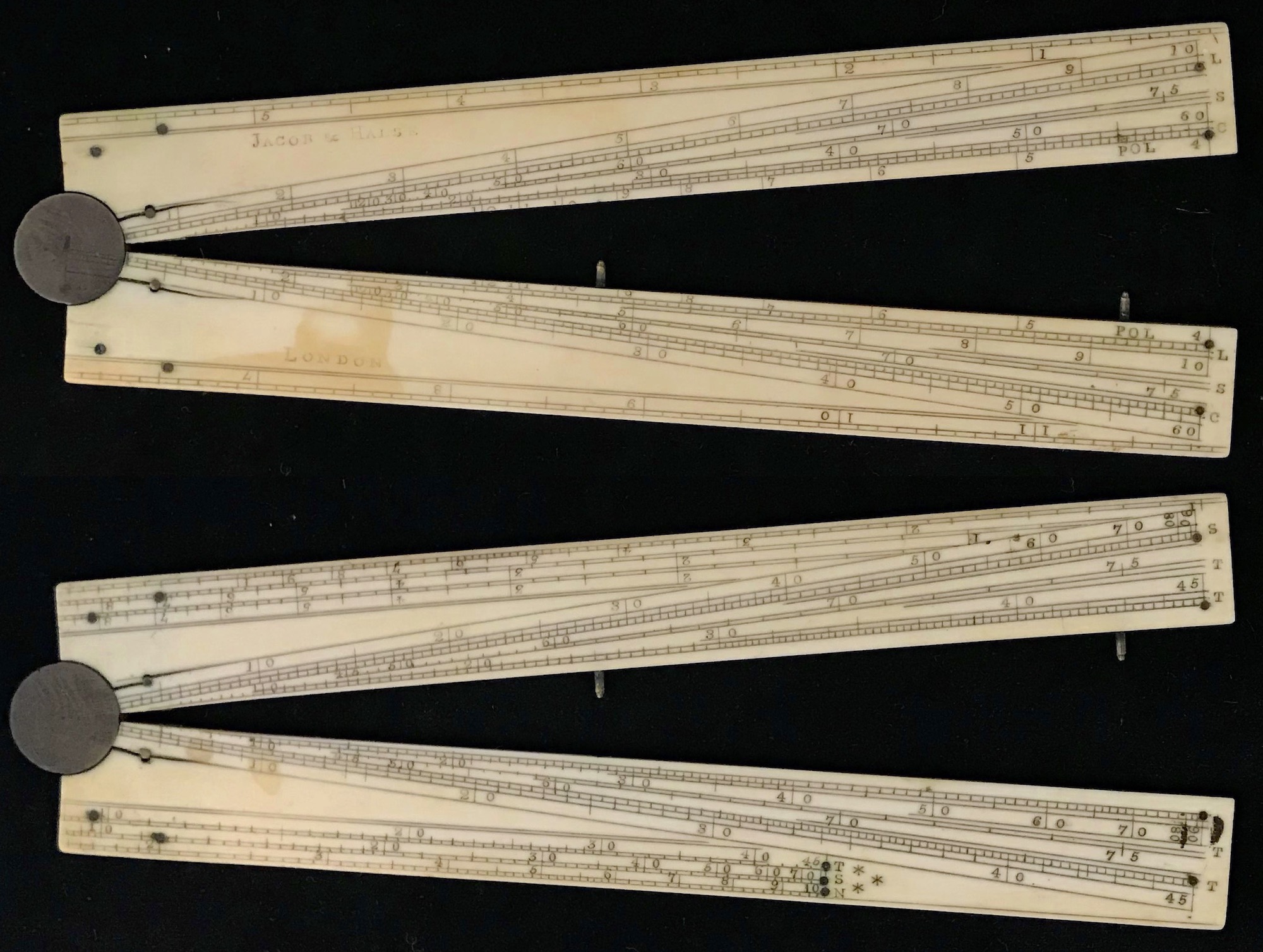
|
| 1816-1824 | Gill | Comparative Rule |
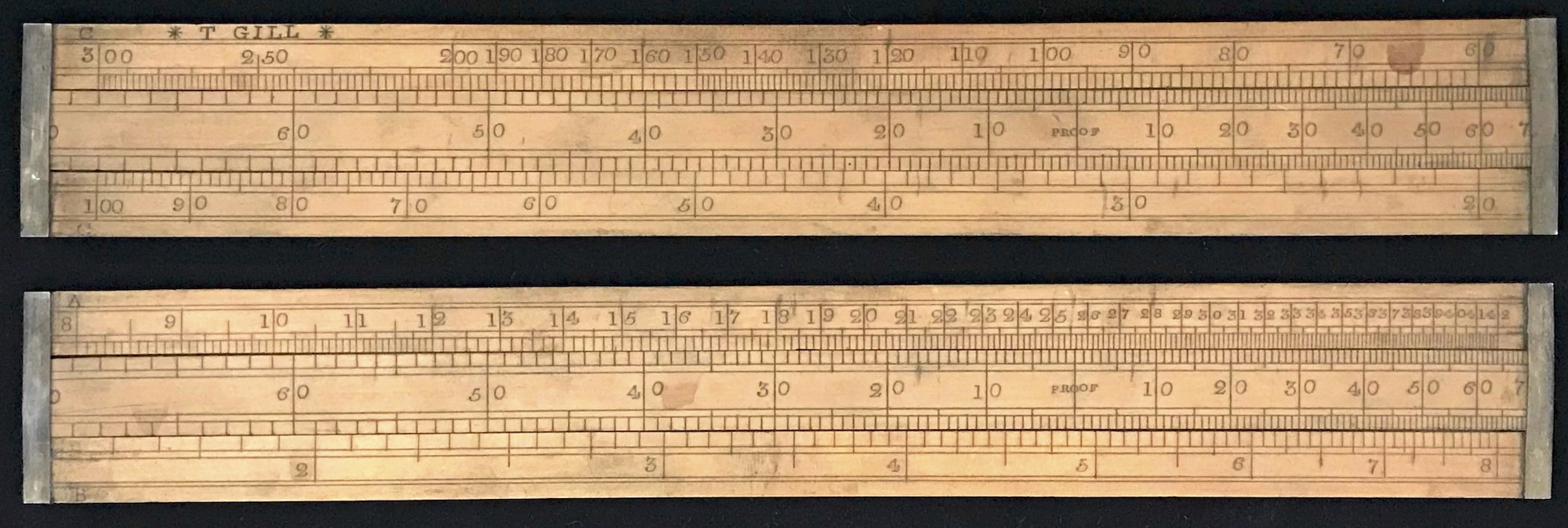
|
| 1816-1824 | Gill | Proof Rule |
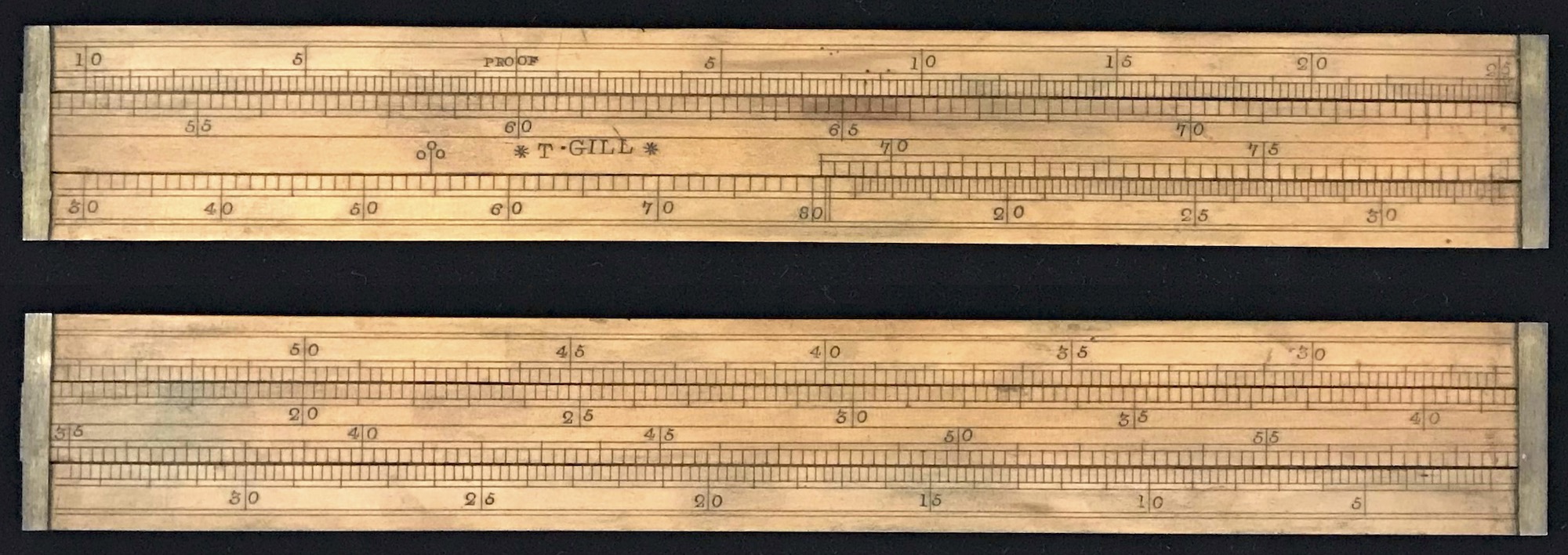
|
| c.1820 | noID | Gunter Rule |

|
| 1824-1827 | Kutz | Ullaging Rule |

|
| 1831-1843 | Belcher Bros. | Engineer’s Rule |

|
| c.1840 | Davies | Routledge Engineer |

|
| 1843 | Palmer | Palmer’s Computing Scale |
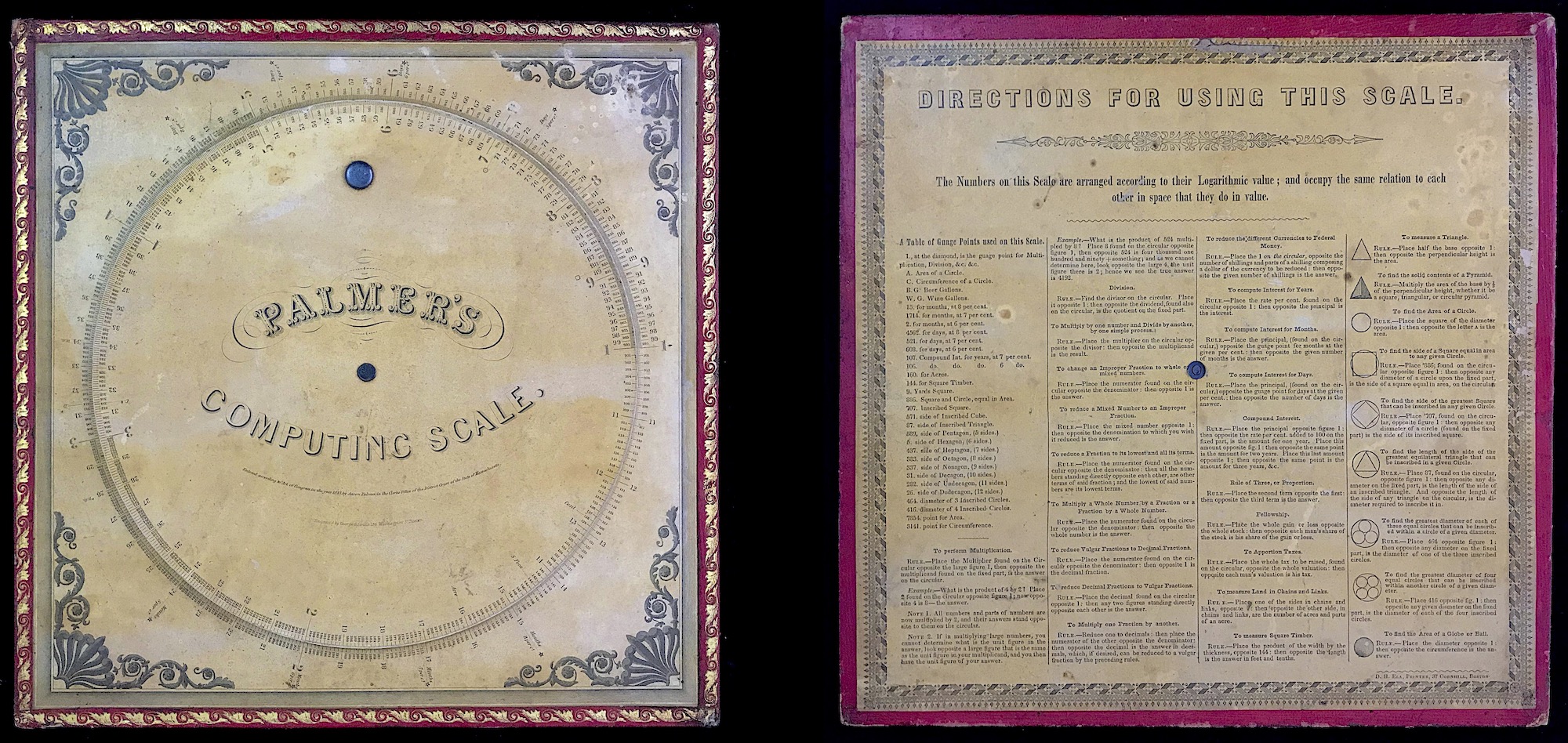
|
| 1845 | Palmer | Palmer’s Pocket Scale |

|
| 1845-1849 | Dring and Fage | Excise Officers Rule |
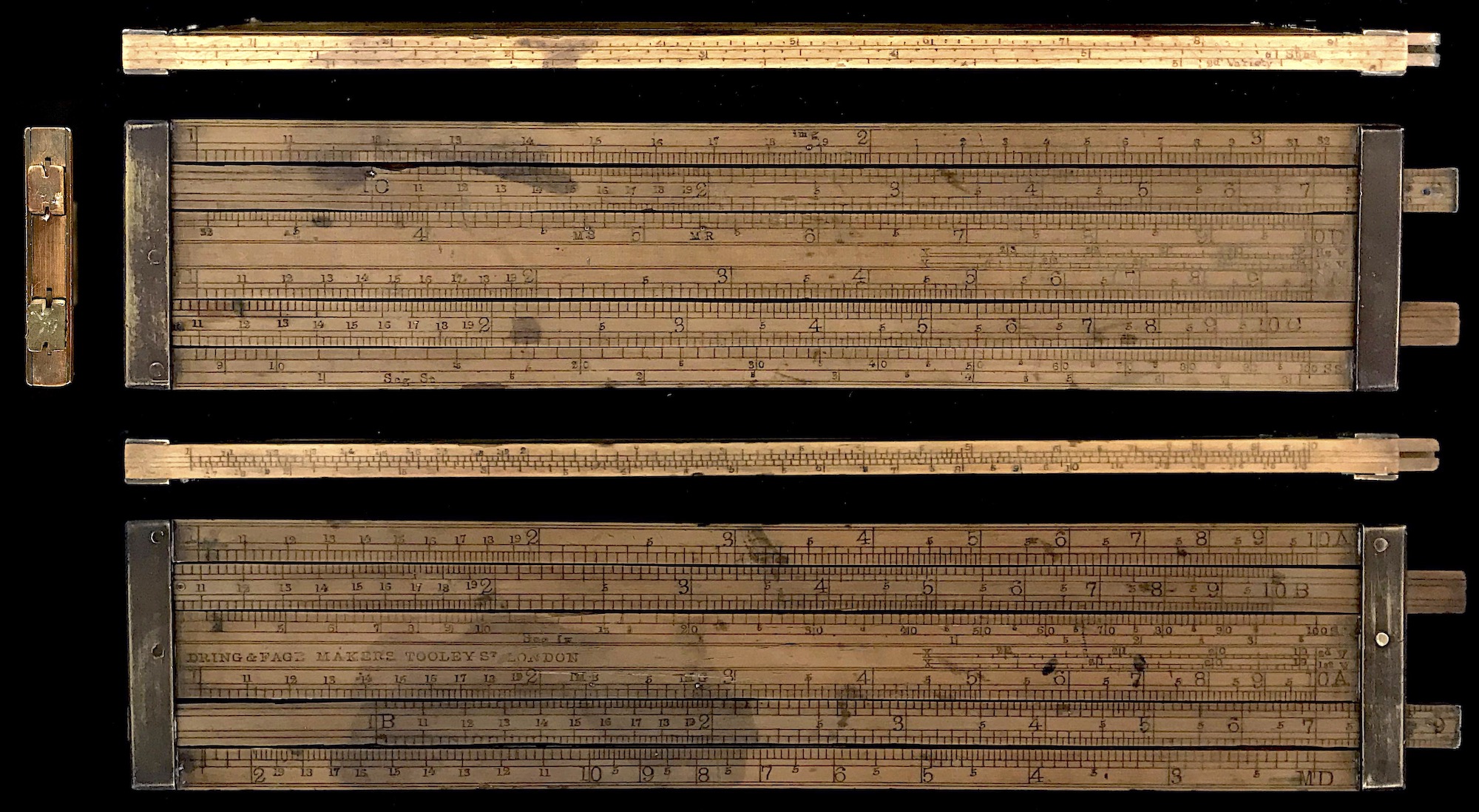
|
| c.1858 | Stanley | No. 15 |
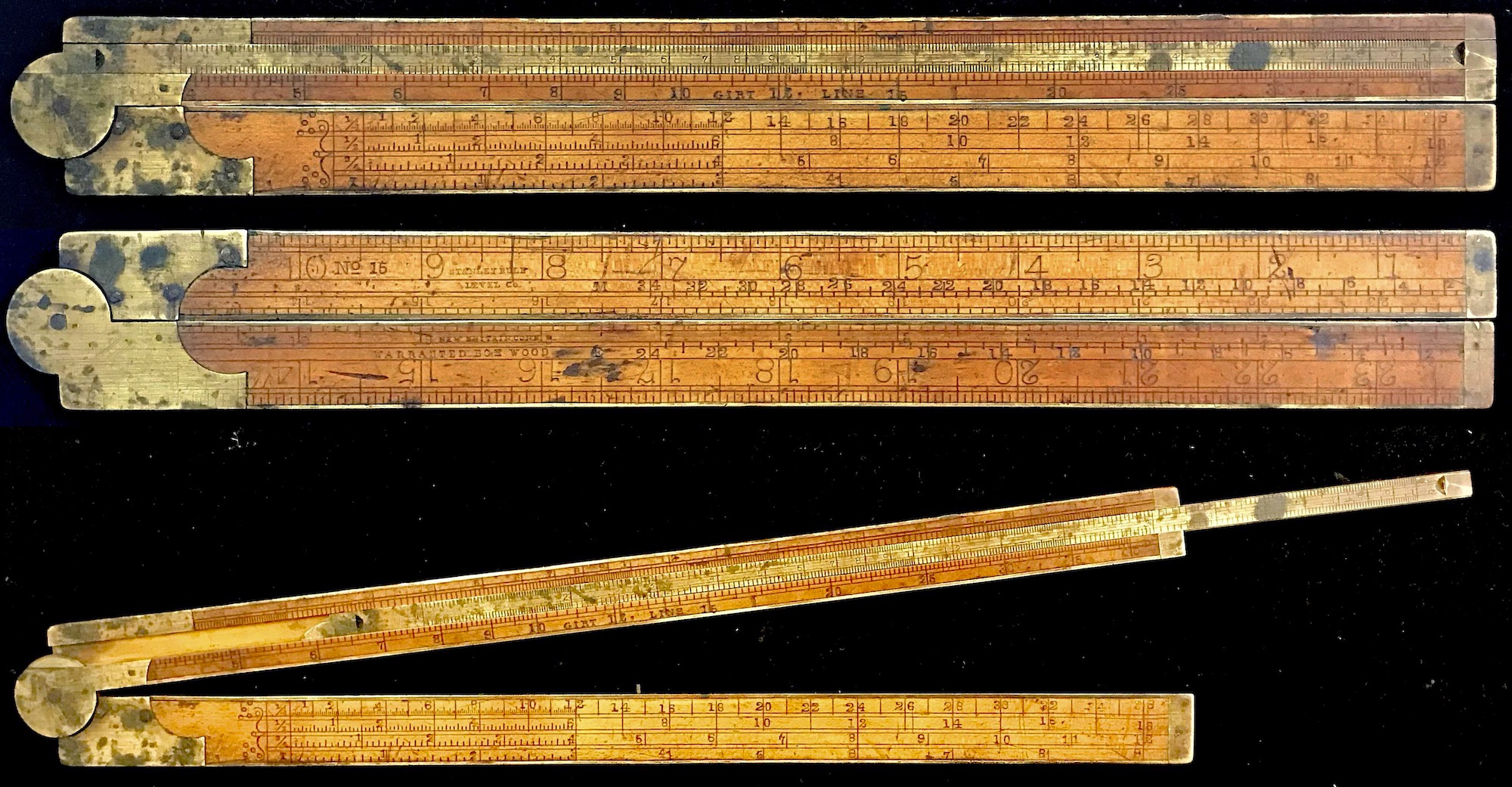
|
| c.1880 | noID | Comparative Rule |
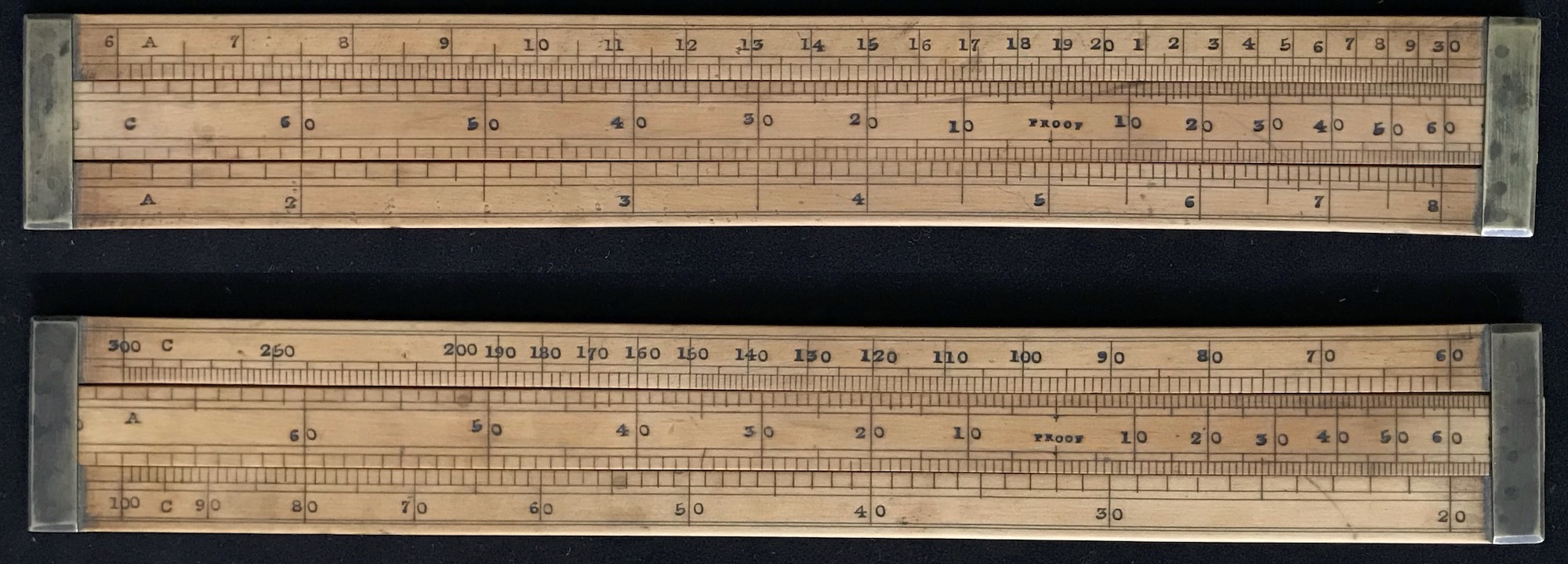
|
| 1882-1900 | Tavernier-Gravet | Soho |

|
| 1883-1902 | Dring and Fage | Inland Revenue Rule |

|
| 1888 | Dennert & Pape | No. 1 |

|
| 1892-1899 | Faber | pre-350 |
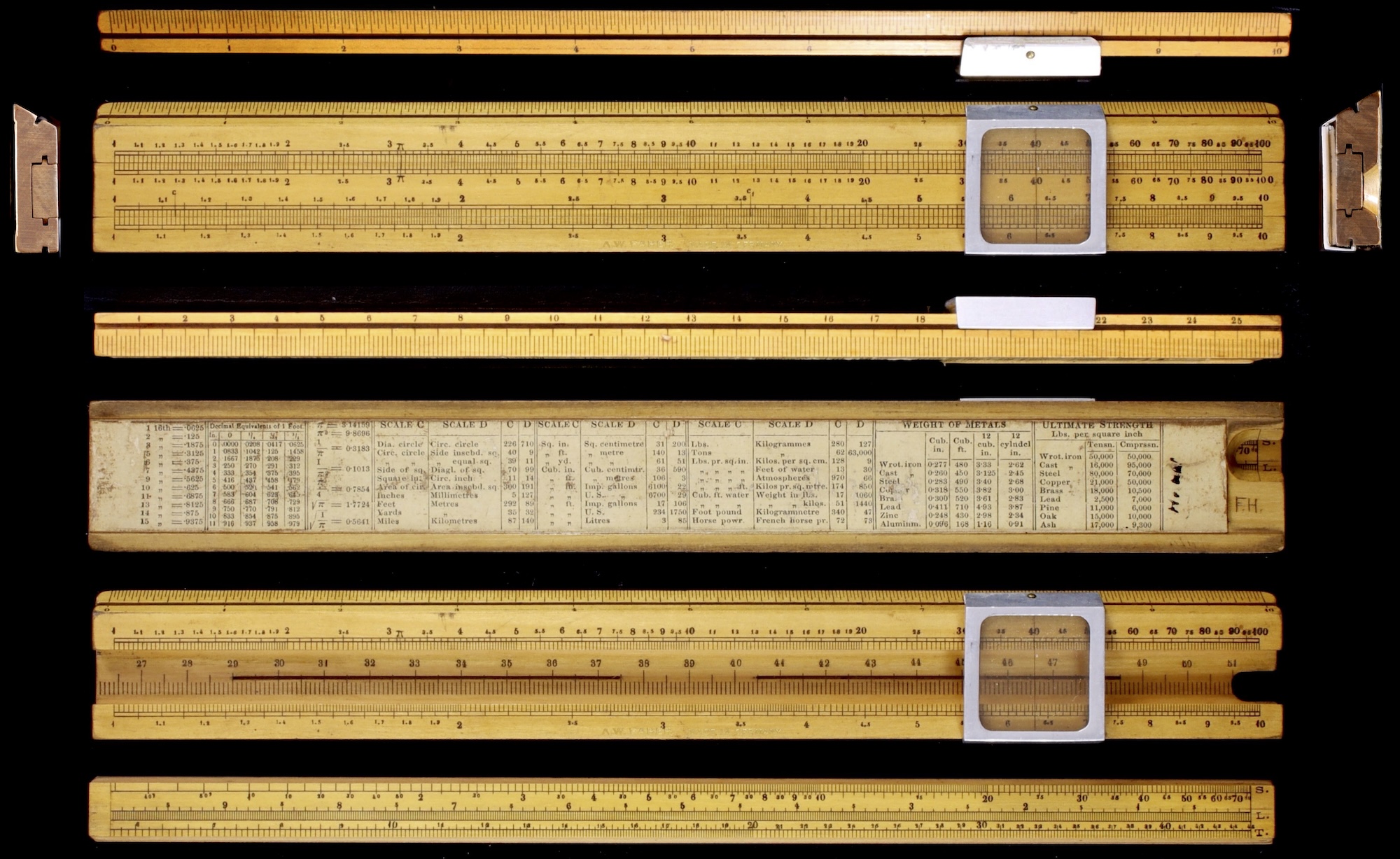
|
| 1897 | Faber | 360 |
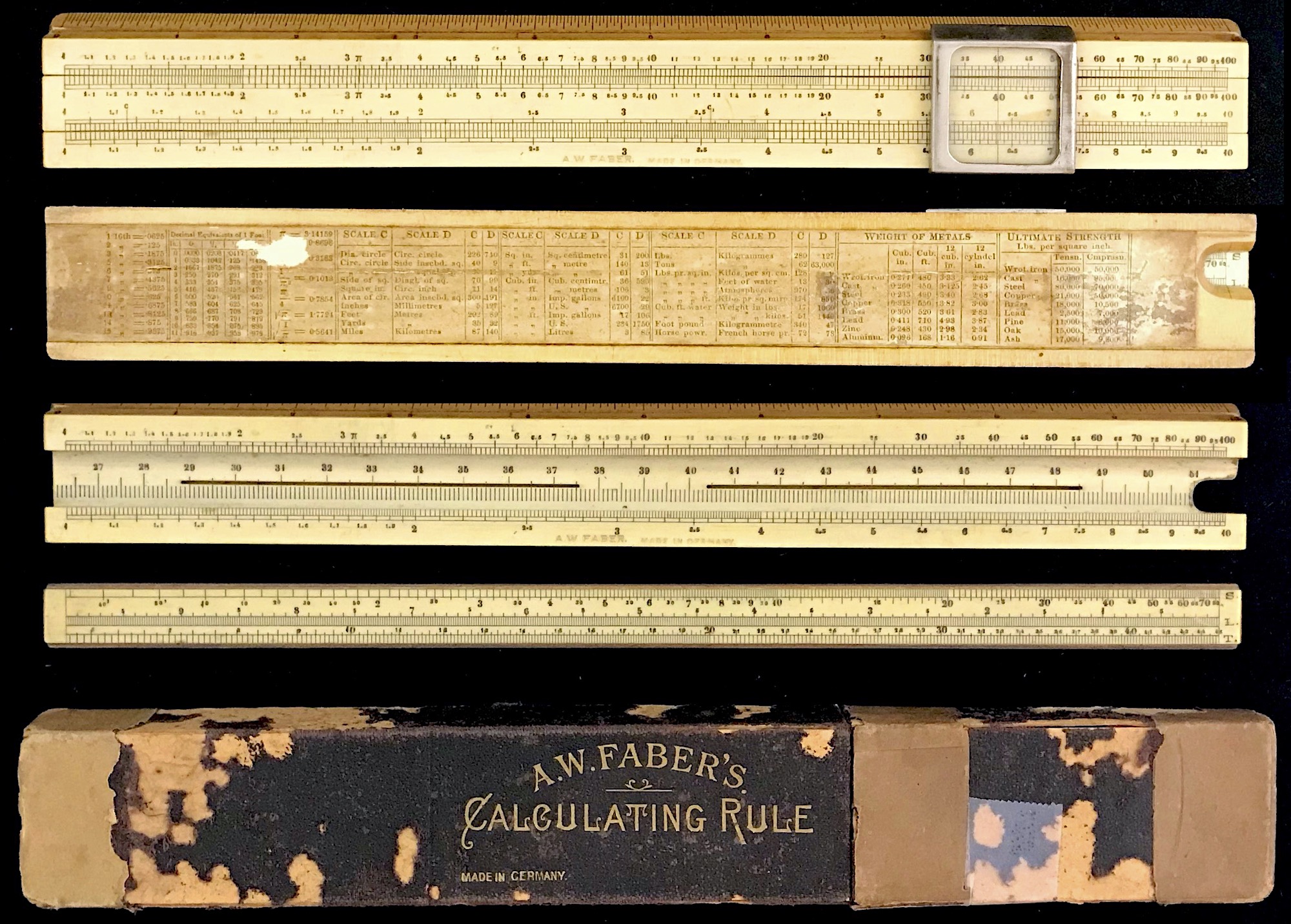
|
| 1898-1900 | Faber | 365 |

|
| 1898-1925 | E.S.A. London | Harrow Mark Reducer |

|